Romney Marsh has some fine ancient churches, and Battleaxe has been meaning to visit them for some time.
At our WI reading group, we had asked for something with local interest, and the library supplied us with ‘Death on the Romney Marsh’ by Deryn Lake. I’d never heard of this author before, but she has published many novels, mostly historical who-done-its. Oddly, today I discovered that she now lives in Battle, when we showed our friend Shaun a lovely shop, British Design British Made, and there was a copy of another Deryn Lake novel on display. Apparently she was in there for a book signing not long ago.
This particular novel is set in 1756, about murder, smuggling, spying and other Dark Deeds, mostly set in Winchelsea, but describes several of the Marsh churches. It was enough to send Battleaxe and Philosopher out to investigate. There is a very good reference website which enabled me to plan a route round the relevant villages.
After a fortifying coffee in Rye we left the main road and set out for the first, and most isolated church, St. Thomas a Becket at Fairfield. The little building stands all on its own in the middle of an empty landscape, and you have to collect the key from a nearby farm, and then walk to the church across a field. Apparently there was never a village at Fairfield, the church was built to serve an outlying and scattered community. Outside, there is still a mounting block, used by those who arrived from distant farms on horseback.
We picked our way through a herd of curious but wary sheep and their half-grown lambs, avoiding the sheep droppings and the marshy patches, and let ourselves in to the church.
 |
| St Thomas a Becket at Fairfield |
 |
| Romney Marsh lambs |
Although it is medieval in origin, the church is principally interesting for its untouched Georgian interior, with high enclosed box pews, painted their original white, a triple-decker pulpit, pious text boards above the altar and on the walls, and a simple altar table, all of which which were popular in the eighteenth century. Throughout the day, we were to find that most of the churches retained at least some of these features – a plain, more puritan style of worship was clearly prevalent.
 |
| St Thomas a Beckett, interior, showing tiered pulpit on left. |
 |
| St Thoas a Beckett, altar |

The parish clerk would have sat on the lowest level of the pulpit, the minister would have used the second level for most of the service, and then climbed up to the top level to deliver the sermon. I read that eighteenth-century sermons frequently lasted several hours, and the congregation would bring chamber pots into their high-walled pews. It must have been private enough, but we did speculate that the sound-effects must have been a little off-putting…..
We emerged into the sunlight and retraced our steps across the field. The shift from dark, enclosed interior to bright sunlight and the empty expanse of the moor was striking, and was to be repeated several times during the day. Many of the churches were built on patches of slightly higher ground to protect them from floods, and have splendid open views. For the first time, we began to realise why the Romney Marsh landscape has always had such a romantic hold on people – the flatness, the remoteness, the sheep, the quiet (except for some very noisy rookeries), the reedy ‘drains’. and the vast, empty sky. We’ve not spent enough time there – see previous post about Appledore.
As we walked back across the field we became aware of a strange, chattering, cackling sound, which we couldn’t place. Eventually deciding that it was some unusual sound made by the sheep, we drove off, and only later realised that of course it was the famous Romney Marsh frogs.
We set off down some tiny and totally remote little lanes, to our next stop, St Augustine at Brookland. This is a very old church, dating from around 1260, and has a detached octagonal belfry standing beside it. The church doors have strange, vaguely Dutch-looking shutters. Although the belfry is very old, it looks quite new, but I read that the Great Storm of 1987 stripped it of all its wooden shingles. Inside the church is a very old lead font, showing the signs of the zodiac, dating from about 1200. There is a large painted board of the Royal Arms, in this case George II, and again, many of the original box pews.
 |
| St Augustine, Brookland, the bell tower |
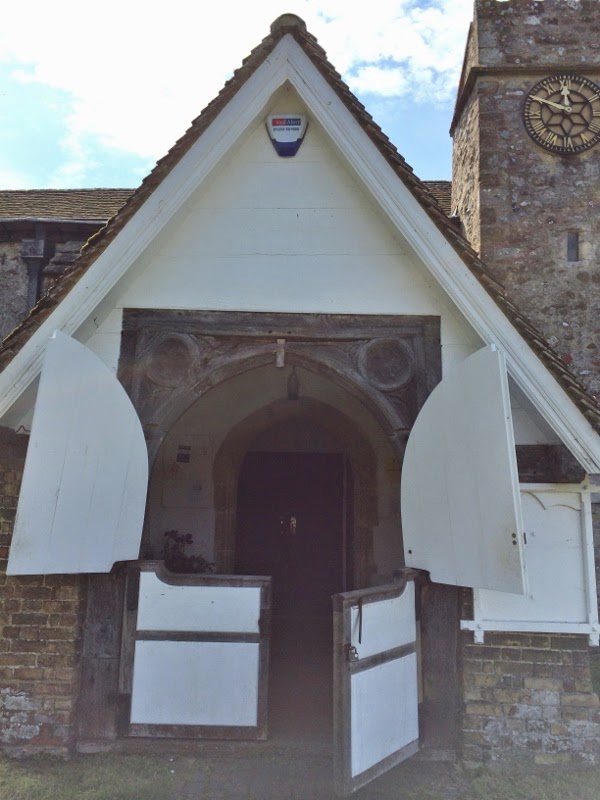 |
| Strange shutters on the porch |
 |
| Ancient lead font |
 |
| St Augustine, the interior |

We plunged back into the little lanes. I wanted to avoid the main roads, but we kept on encountering every variety of huge mechanised farming machinery known to rural life.
Our next church was St Eanswith at Brenzett. Eanswith was a seventh-century Anglo-Saxon princess and saint from Folkestone. Unfortunately, the pretty little church was locked, and by the time we had found out who kept the key, we had lost the will to persist, and drove on to our next destination, St Dunstan’s at Snargate. This has a fifteenth century painting of a ship on the wall, which is believed to have indicated that the church was a safe haven for smugglers.
 |
| St Eanswith at Brenzett |
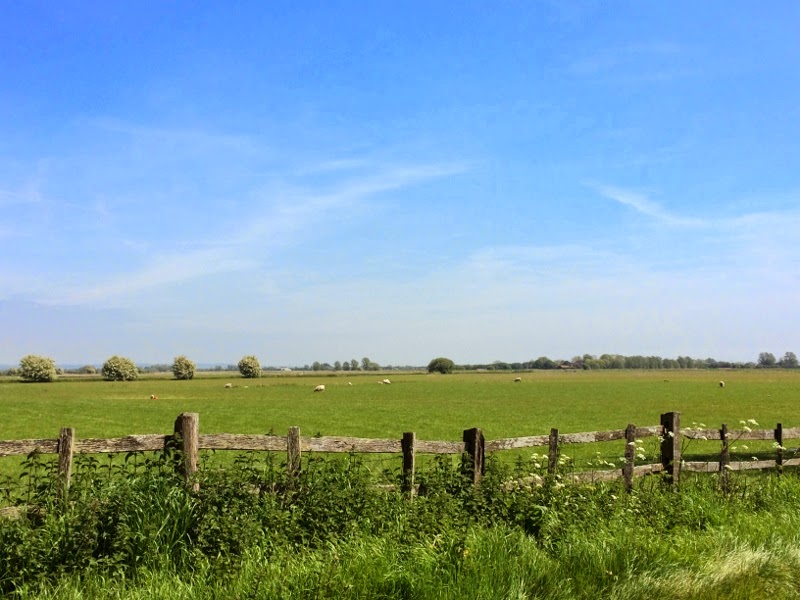 |
| Wide expanse of Romney Marsh |
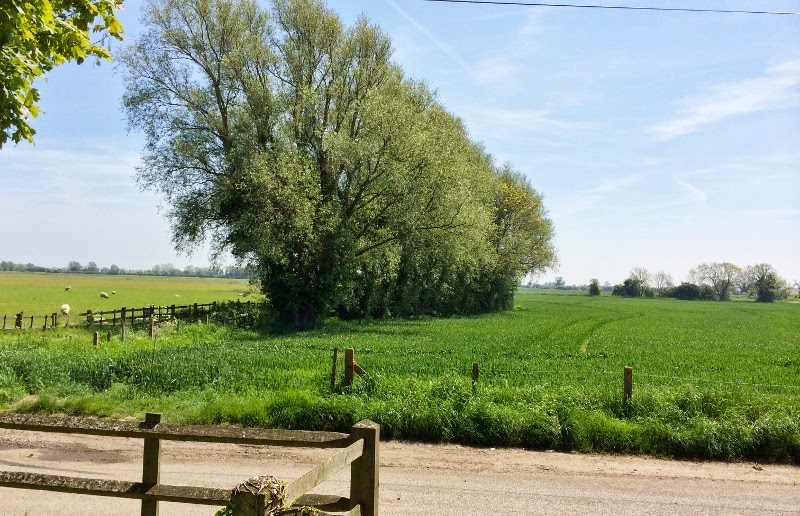
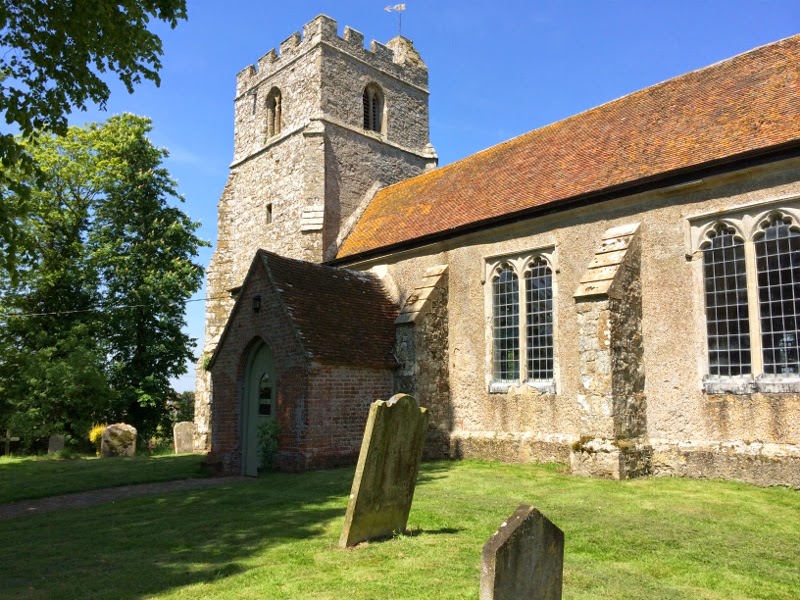 |
| St Dunstan’s, Snargate |
 |
| Ship painting in St Dunstan’s |
Next, Ivychurch. By this time, we were getting hungry, so stopped at the nice-looking Bell Inn next door to the church for lunch. The pub has been the regional CAMRA pub of the year for about the last 6 years, but I wonder if the beer lovers ever order any food? The menu was not complex, but we waited an interminable age for our meals. Philosopher ordered salmon, which seemed to cause the kitchen much difficulty. We were told several times that the salmon ‘took a long time to come up’. What were they doing – sitting on the banks of a Scottish stream waiting for the fish to take the bait?
 |
| The Bell at Ivychurch |
St George’s at Ivychurch is the largest church on the Marsh, an impressive stone building that looks a bit like a castle from the outside. Inside it was a bit bare – the nave is empty of pews. There are supposed to be tunnels connecting the church with the pub. Perhaps they sneaked out of church, ordered their food in the pub, and then had time to listen to the two-hour sermon before the food was ready.
 |
| St George’s, Ivychurch |
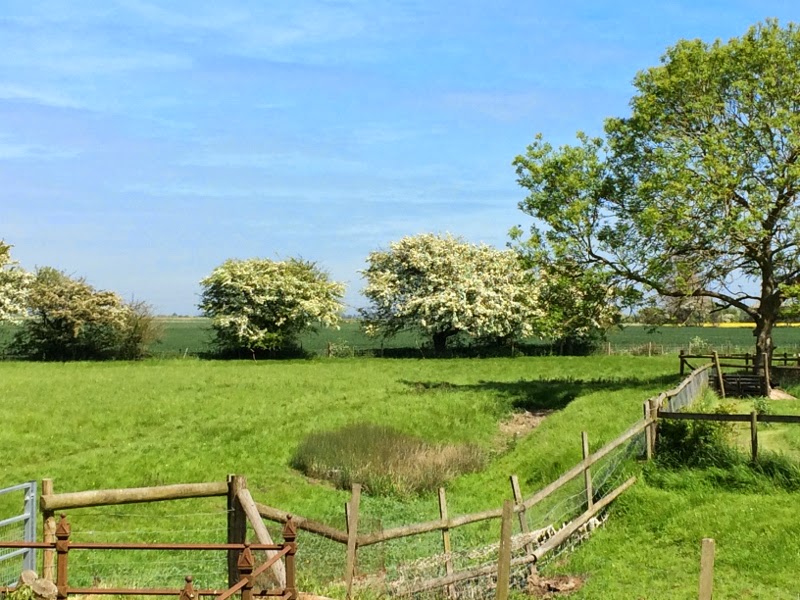 |
| Lovely hawthorns |
 |
| Six small children from one family – Ivychurch |
E Nesbit is buried in the churchyard of St Mary the Virgin at St Mary in the Marsh. There is another pub across the road from this church, which looked OK. Apparently, Noel Coward lived for a while in the cottage next to the pub, but we couldn’t see a plaque.
 |
| St Mary the Virgin, St Mary in the Marsh, with familiar Yeti outside |
 |
| Royal arms in St Mary’s, as seen in most of the churches. |
Finally, we visited St Clement’s at Old Romney. This is one of the oldest and prettiest churches, and has been little altered since Norman times. It has box pews, this time painted pink (?!) and an eighteenth century wooden gallery. Apparently Derek Jarman is buried in the churchyard, but we didn’t see his grave.
 |
| St Clement, Old Romney |
 |
| Interior of St Clements, showing typical text boards and royal arms |
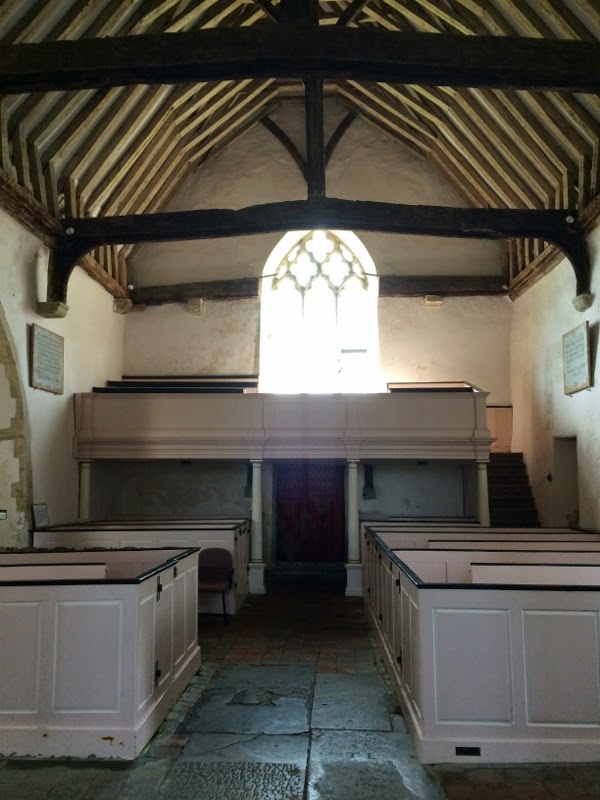 |
| St Clement – box pews and gallery |
Deciding we had had enough ecclesiastical culture, we made another attempt to listen to the frogs, but obviously they had all gone to sleep in the sun, so we drove home.





















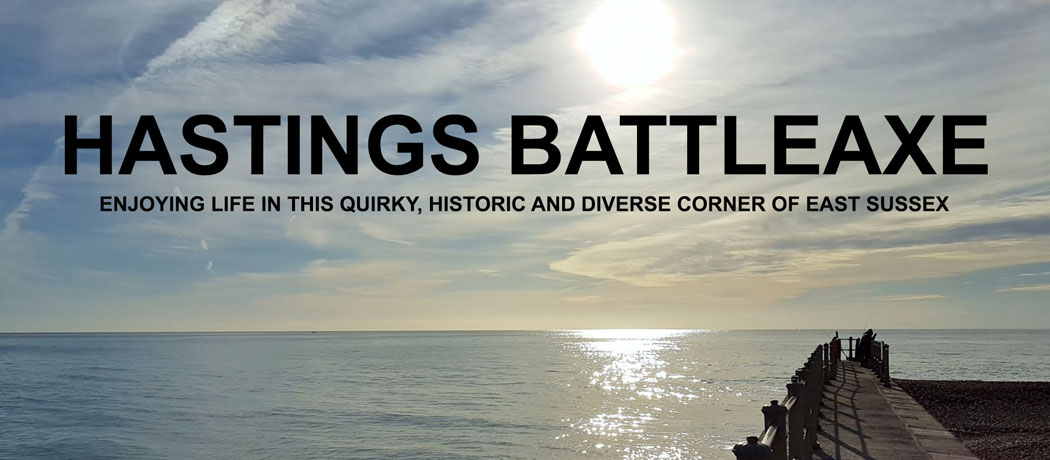



Comments from Google+